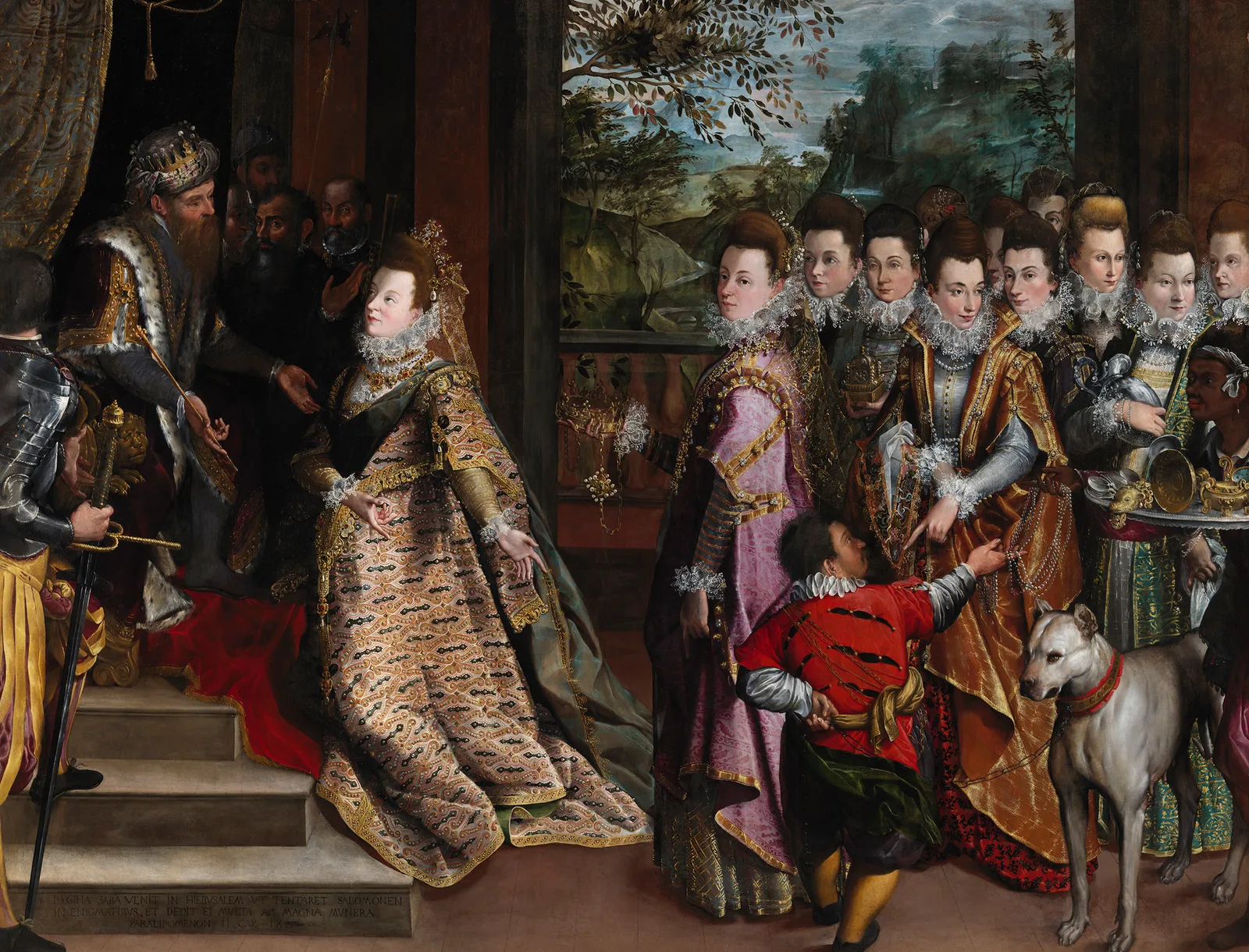Blazing a trail would be no easy feat, revealed curator Dr Aoife Brady, giving a lecture earlier this year at Trinity College Dublin. She discussed the numerous steps of curating her upcoming Fontana exhibition, from choosing what to include in the display, deciding what colour the walls should be, and writing the catalogue. These steps only came after taking the time to consider questions of marketing, funding, and commercial viability, not to mention tedious loan requests, negotiations for which often start years before the exhibition opening. However, this meticulous process has led to an exhibition of curatorial excellence that can be seen now at the National Gallery of Ireland.
Lavinia Fontana: Trailblazer, Rule Breaker runs until August 27 and is the artist’s first monographic exhibition in over 25 years. It focuses on Fontana’s portraiture, making it the first exhibition to highlight this aspect of her oeuvre.
“It is only in recent decades that women artists such as Fontana are being inserted into the narrative from which they were erased.”
Lavinia Fontana was a Renaissance painter and arguably the first professional female artist, notable for achieving success in Bologna and Rome. Much like her predecessors (and successors), she has been excluded from the art history canon for over three centuries. It is only in recent decades that women artists such as Fontana are being inserted into the narrative from which they were erased.
Fontana’s work leans towards Mannerism with her elongation of form and vibrant colour. She was most prolific in portraiture, as is apparent from the extraordinary amount of works on display in the National Gallery. Alongside her paintings are those of her contemporaries and close artistic circle. As well as this, objects are placed throughout the exhibition to evoke 16th-century Italy, such as documents, a medal, a clock, and more. The exhibition aims to explore how Fontana achieved success as well as her artistic skill. It is split into five rooms according to theme: Fontana and Men, Fontana and Women, Fontana and Children, Allegory and Myth, and finally, The Crowning Glory.
The first room explores Fontana’s relationships with men, appropriately named Fontana and Men. Starting this exhibition with a focus on men at first seems counterproductive when celebrating a female artist. However, men were a gateway for women artists to succeed due to the exclusionary nature of the patriarchy. Indeed, in Linda Nochlin’s seminal essay, “Why have there been no great women artists?” (1971), she argued that successful female artists almost without exception were connected to a more dominant male artistic personality, or they were the daughters of artist fathers. This was the case for Lavinia Fontana, whose father, Prospero Fontana, was a successful Bolognese artist and whose work is also on display alongside Fontana’s in the first room of the exhibition. As well as this, Fontana’s marriage contract is displayed, an unexpected but profound document which was unusual for the time as it stipulates that Fontana’s husband, Gian Palo Zappi, was to move to Bologna where Fontana lived and that she was to continue her career as an artist (usually women were confined to domestic roles after marriage). The exhibition celebrates Fontana’s success while acknowledging that she had privileges afforded to her that other female artists did not: her exceptionally supportive father and husband.
However, this does not detract from Fontana’s achievements, as her artistic skill was what informed her long and successful career. Her exquisite attention to detail and ability to capture intricately embroidered fabrics, as seen in her painting Self Portrait at the Virginal (1577), made her famous among the Bolognese elite. Interestingly, this exhibition includes samples of 16th-century silk which shows the type of clothes Fontana painted. This addition of textiles emphasises Fontana’s extraordinary ability to replicate the embroidery her wealthy patrons wore.
“These are particularly groundbreaking as Fontana is considered the first female artist to paint female nudes.”
As you progress through the exhibition, you are met with Fontana’s many portraits of women and children, mainly completed in the late 16th century, followed by her paintings of mythological subjects such as Venus and Mars (1595) and Minerva Dressing (1613). These are particularly groundbreaking as Fontana is considered the first female artist to paint female nudes. Perhaps the artist’s reputation as a rule breaker and trailblazer is starting to make more sense — her refusal to compromise on subject matter cements Fontana’s reputation as the riot grrrl of the 16th-century art scene.
The “crowning glory” of this exhibition is Fontana’s monumental The Visit of the Queen of Sheba to King Solomon (1552-1614), which is found in the final room of the exhibition, appropriately named The Crowning Glory. This ambitious group portrait, a biblical scene of the highest quality, exemplifies Fontana’s astonishing artistic prowess. Here, Fontana’s ability to paint intricate jewels and delicate embroidery is on full display, with each figure dripping in furs, silks and jewels. The painting has been placed against a crimson wall, possibly alluding to the Medici’s Tribuna in the Uffizi, which influenced curation for centuries and thus warrants Fontana’s inclusion within the traditional artistic canon.
“It is truly the renaissance of Lavinia Fontana come to life at the National Gallery of Ireland.”
This exhibition is a triumph of both curatorial and artistic skill. Fontana’s work has been recontextualised and celebrated for the first time in a way that is accessible and engaging. There are tours, audio guides, a catalogue (although quite expensive) and a full programme of events offered by the gallery to bring this extraordinary exhibition to life. It is truly the renaissance of Lavinia Fontana come to life at the National Gallery of Ireland.






